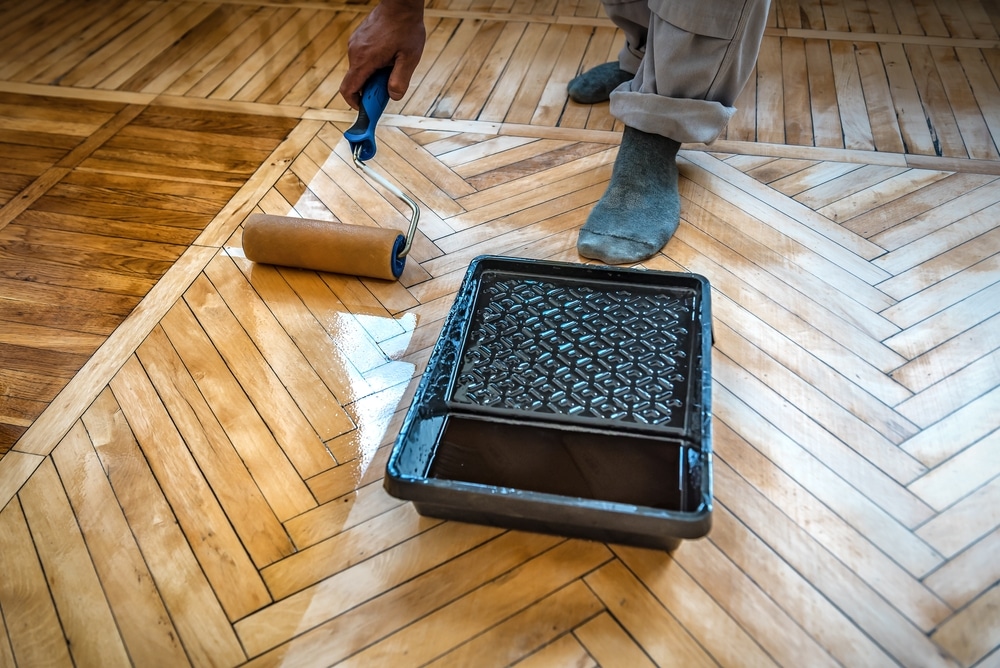Parquet floors are often regarded as a symbol of timeless elegance and classic craftsmanship. Made from small, carefully arranged wooden blocks, parquet flooring creates intricate geometric patterns that add character and sophistication to any room. However, as beautiful as they are, parquet floors, like all types of flooring, are susceptible to the wear and tear of daily life. Over time, they can lose their sheen, develop scratches, and even become dull and damaged.
If you’re fortunate enough to have old parquet flooring in your home, you may wonder whether it’s worth saving or if it’s too late to restore it to its former glory. The good news is that Parquet floor restoration is not only possible but can also transform tired and damaged floors into stunning focal points once again. In this article, we’ll explore how old parquet floors can be revived, the restoration process, and the incredible possibilities for bringing these floors back to life.
Why Parquet Floors Are Worth Saving
Before diving into the restoration process, it’s important to understand why parquet floors are worth preserving. Parquet flooring, especially in older homes, is often crafted from high-quality, solid wood, such as oak, maple, walnut, or cherry. The intricate patterns, such as herringbone, chevron, or basketweave, are the result of skilled craftsmanship that is hard to find in modern flooring. In fact, many parquet floors are considered pieces of art due to their unique and intricate designs.
Here’s why restoring parquet floors is a great choice:
- Timeless Aesthetic Appeal: Parquet floors never go out of style. Their classic beauty and intricate patterns make them a standout feature in any room, whether your home has a traditional or modern design.
- High-Quality Materials: Parquet floors made from solid wood are durable and long-lasting. When properly restored, they can last for decades, making them a worthwhile investment in your home’s value.
- Unique Patterns: The geometric patterns created by parquet flooring are rarely seen in mass-produced flooring today. Restoring these floors allows you to keep a piece of history and craftsmanship alive in your home.
- Increased Property Value: Restoring original parquet floors can enhance your home’s value, especially if you live in an older or historically significant property. Well-maintained parquet floors are often seen as a luxury feature that adds charm and sophistication.
Signs Your Parquet Floors Need Restoration
If you’re unsure whether your parquet floors can be restored, it’s important to identify the signs that indicate they need attention. While some minor wear can be addressed with basic maintenance, more serious damage requires professional restoration. Here are some common signs that your parquet floors need restoration:
- Scratches and Scuff Marks: If your parquet floors have noticeable scratches or scuff marks from furniture, shoes, or pets, sanding and refinishing can help smooth out the surface and eliminate these imperfections.
- Dullness and Loss of Shine: Over time, the protective finish on parquet floors can wear away, leaving the wood looking dull and lifeless. Restoring the floor with a fresh coat of finish will bring back its natural shine.
- Gaps Between Wooden Blocks: Changes in temperature and humidity can cause the wooden blocks in parquet flooring to expand and contract, leading to gaps between the blocks. These gaps can be filled during the restoration process.
- Water Damage: Parquet floors are vulnerable to moisture, which can cause warping, stains, and discoloration. Water damage needs to be addressed as part of the restoration process to prevent further harm to the wood.
- Stains or Discoloration: Spills, sunlight, and cleaning chemicals can lead to discoloration on parquet floors. Professional restoration can help remove stains and restore the floor’s original color.
- Loose or Broken Blocks: If individual blocks of the parquet floor are loose, damaged, or missing, they can be repaired or replaced during restoration.
The Parquet Floor Restoration Process
Restoring parquet floors is a meticulous process that requires skill and expertise. It involves several steps to ensure that the floor is not only repaired but also protected for years to come. Here’s what you can expect from a typical Parquet floor restoration project:
1. Initial Assessment
The first step in any parquet floor restoration project is a thorough inspection and assessment of the floor’s condition. A professional floor restoration expert will examine the extent of the damage, identify areas that need repair, and determine whether the floor needs sanding, refinishing, or repairs to specific blocks. This assessment helps to develop a tailored restoration plan based on the floor’s unique needs.
2. Cleaning the Floor
Before any work begins, the floor needs to be thoroughly cleaned to remove dust, dirt, and debris. This ensures that the restoration process starts with a clean surface. Cleaning also helps reveal any hidden damage that may not have been visible during the initial inspection.
3. Sanding the Floor
Sanding is one of the most critical steps in parquet floor restoration. The goal of sanding is to remove the damaged top layer of the wood, including scratches, stains, and imperfections, to reveal a fresh, smooth surface underneath. This process requires precision, especially with parquet floors, as the patterns and direction of the wood grain need to be carefully considered.
Multiple passes of sanding with progressively finer grits of sandpaper are typically required to achieve a smooth, even finish. An expert will ensure that the floor is sanded evenly without damaging the intricate parquet pattern.
4. Repairs and Replacement
After sanding, any loose, damaged, or missing blocks in the parquet pattern can be repaired or replaced. Matching the wood type, color, and grain is essential to maintain the floor’s uniformity. Skilled craftsmen can source matching wood and integrate it seamlessly into the existing pattern.
If there are gaps between the blocks, these can be filled with wood filler or a custom-mixed compound to match the color of the surrounding wood. This step ensures that the floor looks flawless once restored.
5. Staining (Optional)
Staining is an optional step in the restoration process. If you want to change the color of your parquet floor or enhance its natural tones, a stain can be applied after sanding. Staining brings out the grain of the wood and can dramatically alter the appearance of the floor, depending on your design preferences.
6. Finishing and Sealing
The final step in the parquet floor restoration process is applying a protective finish to the wood. This finish helps protect the floor from future damage, such as scratches, stains, and wear. Popular finishes include oil-based or water-based polyurethane, hard wax oil, and varnish.
The type of finish you choose will depend on the look you want to achieve and the level of durability you need. For example, oil-based finishes provide a warm, rich look, while water-based finishes offer a clearer, more modern appearance. Multiple coats of finish are applied to ensure the wood is well-protected and that the surface is smooth and even.
Maintaining Your Restored Parquet Floors
Once your parquet floors have been restored, proper maintenance is key to keeping them looking their best for years to come. Here are some tips for maintaining your restored parquet floors:
- Regular Cleaning: Sweep or vacuum regularly to remove dirt and debris that can scratch the surface of the floor. Avoid using harsh chemicals or excessive water when cleaning parquet floors.
- Use Protective Pads: Place protective pads under furniture legs to prevent scratches when moving furniture.
- Control Humidity: Wood is sensitive to changes in humidity. Use a dehumidifier or humidifier to maintain stable humidity levels in your home to prevent the wood from expanding or contracting.
- Avoid Excessive Water: Parquet floors are sensitive to water, so avoid using excessive water when cleaning. Use a damp mop rather than a soaking wet one, and wipe up spills immediately to prevent water damage.
Conclusion
Old parquet floors are not just a piece of your home’s history; they are a testament to craftsmanship and timeless design. With professional Parquet floor restoration, you can bring your tired, worn-out floors back to life and enjoy their beauty for many years to come. By addressing scratches, dullness, water damage, and more, restoration experts can revitalize your floors and transform your space. If you have parquet floors in your home, don’t give up on them—explore the possibilities of restoration and discover how your floors can become a stunning focal point once again.





